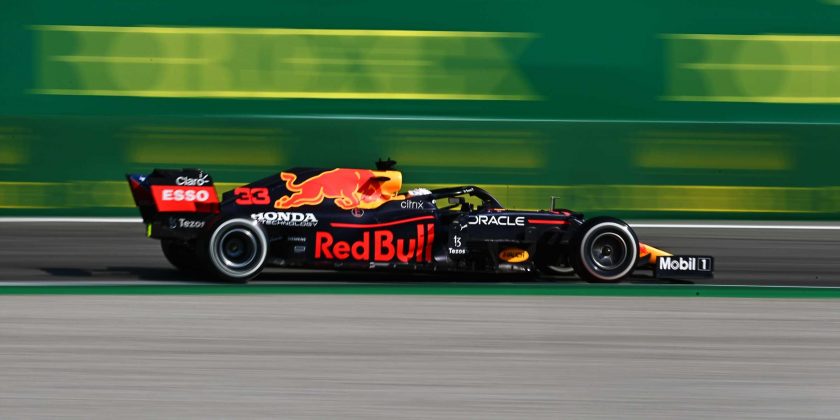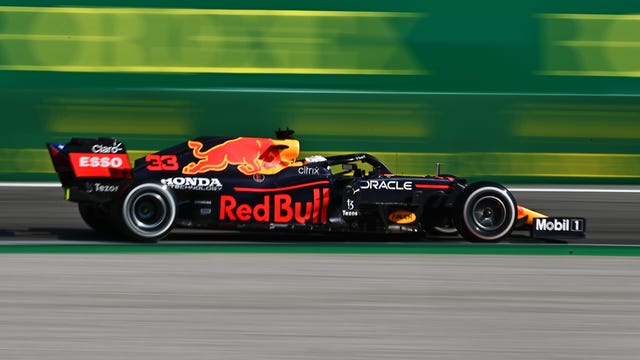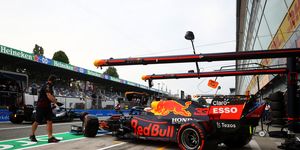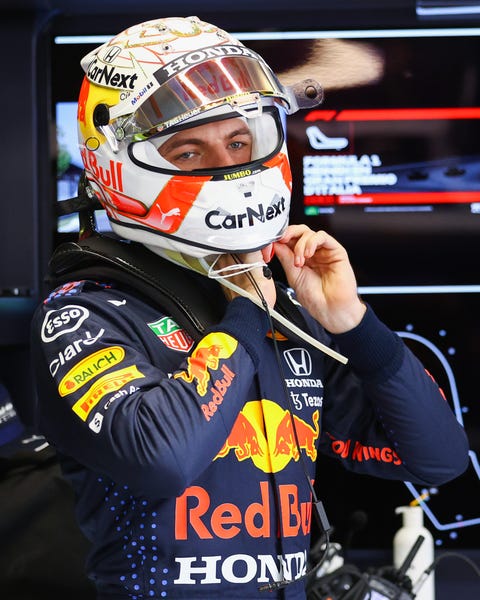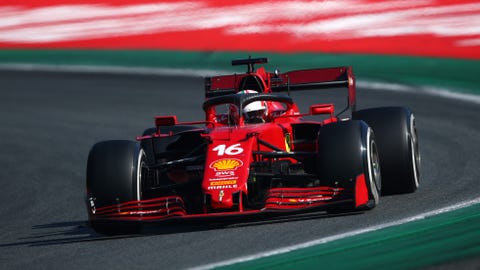The manufacturer is leaving Formula 1 in under three months’ time, but Honda is still going all out with the development of its power unit.
The payoff, the company hopes, will come both in the final F1 standings and eventually in your driveway.
Honda’s early years in the turbo hybrid era were marked by chronic unreliability and underperformance, but it eventually turned around its prospects. Honda currently powers the title-chasing Red Bull Racing team, and sister outfit AlphaTauri, and is determined to go out on a high note.
The company announced last October that it would be withdrawing from Formula 1 at the end of 2021 though was not going to go quietly.
After swiftly receiving the approval of senior company officials, Honda’s Formula 1 engineers were given the approval to accelerate development of the power unit that was originally planned for 2022. Formula 1’s complex power units comprise six separate components: the Internal Combustion Engine, MGU-K, MGU-H, Turbocharger, Control Electronics and Energy Store.
Under current F1 regulations, each power unit component is permitted one upgrade per season, at the discretion of each manufacturer, while each driver may use no more than three of each component. Use more than three of the same component and face a grid penalty.
Several updated components were introduced in time for the start of the season in March, including the ICE, as Honda sought to take the battle to the turbo hybrid era’s dominant outfit Mercedes. But it continued to use its old-spec Energy Store (ES).
The ES requires specialist equipment for its development due to its nature as a high voltage and high output component. It carries a significantly longer lead time than other PU components and this is hurt further by the certification required for its transportation around the world and the required crash test approvals.
Initially set to be introduced in February 2022, Honda engineers from various departments, including from the road car battery development team, delivered the new ES during Formula 1’s August break. It has taken several years for Honda to develop.
Honda has now revealed that its new-spec ES was fitted to F1 Drivers’ Championship leader Max Verstappen’s Red Bull RB16B for the first post-summer race in Belgium, for which he claimed pole position, then took victory in the abbreviated race.
Verstappen went on to claim a pole and win at his home event in the Netherlands, and heads to this weekend’s Russian Grand Prix five points ahead of Lewis Hamilton in the standings.
“This new ES has been developed in a project that has taken several years, with an aim to combine improvements in energy efficiency with significant reductions in weight,” Honda F1’s head of power unit development Yasuaki Asaki said. “In what will be the company’s final season in the sport, Honda F1 has managed to introduce the new ES—fitted with a lighter, low-resistance, highly efficient and ultra-high power battery cell—just in time for the start of the second half of the season.
“In order to achieve the ultimate goal of defeating Mercedes and winning the championship before leaving F1 at the end of the 2021 season, we recognized the need to enhance performance. As such, the development plan for the new ES was brought forward substantially from the original goal of 2022 to introduction during the 2021 season.”
While Honda is soon quitting Formula 1, its new ES will have crossover into its automobile sector, while it will still have relevance in racing.
The newly-formed Red Bull Powertrains will take over the production and development of Honda’s power unit after the company’s official exit. Red Bull Powertrains will supply Red Bull Racing and AlphaTauri from 2022 through at least 2025, when new engine regulations are set to be introduced. Even though Honda is leaving, it wants its technology to have a legacy.
“Even after Honda leaves F1, this new battery technology will contribute hugely to Honda’s future technology to create a carbon neutral society, lead the advancement of mobility and enable people everywhere in the world to improve their daily lives,” said Asaki.
Ferrari Updates
Honda is not the only F1 power unit manufacturer still working on its technology this late in the season.
Ferrari is introducing an updated hybrid system for its SF21 this weekend, though was coy on the exact details of the technology, outlining only that ‘its main purpose is to gain experience for the 2022 car project’.
Only Charles Leclerc will use the updated specification power unit and he will start Sunday’s Grand Prix from the back of the grid owing to exceeding his season’s worth of allocated components.
Ferrari is in the midst of its longest Formula 1 drought since the early 1990s with today (Wednesday) marking the second anniversary of its most recent win. Ferrari holds fourth in this year’s standings, an improvement of last year’s sixth, a position to which it slumped due to a woeful chassis and lackluster power unit.
Source: Read Full Article
